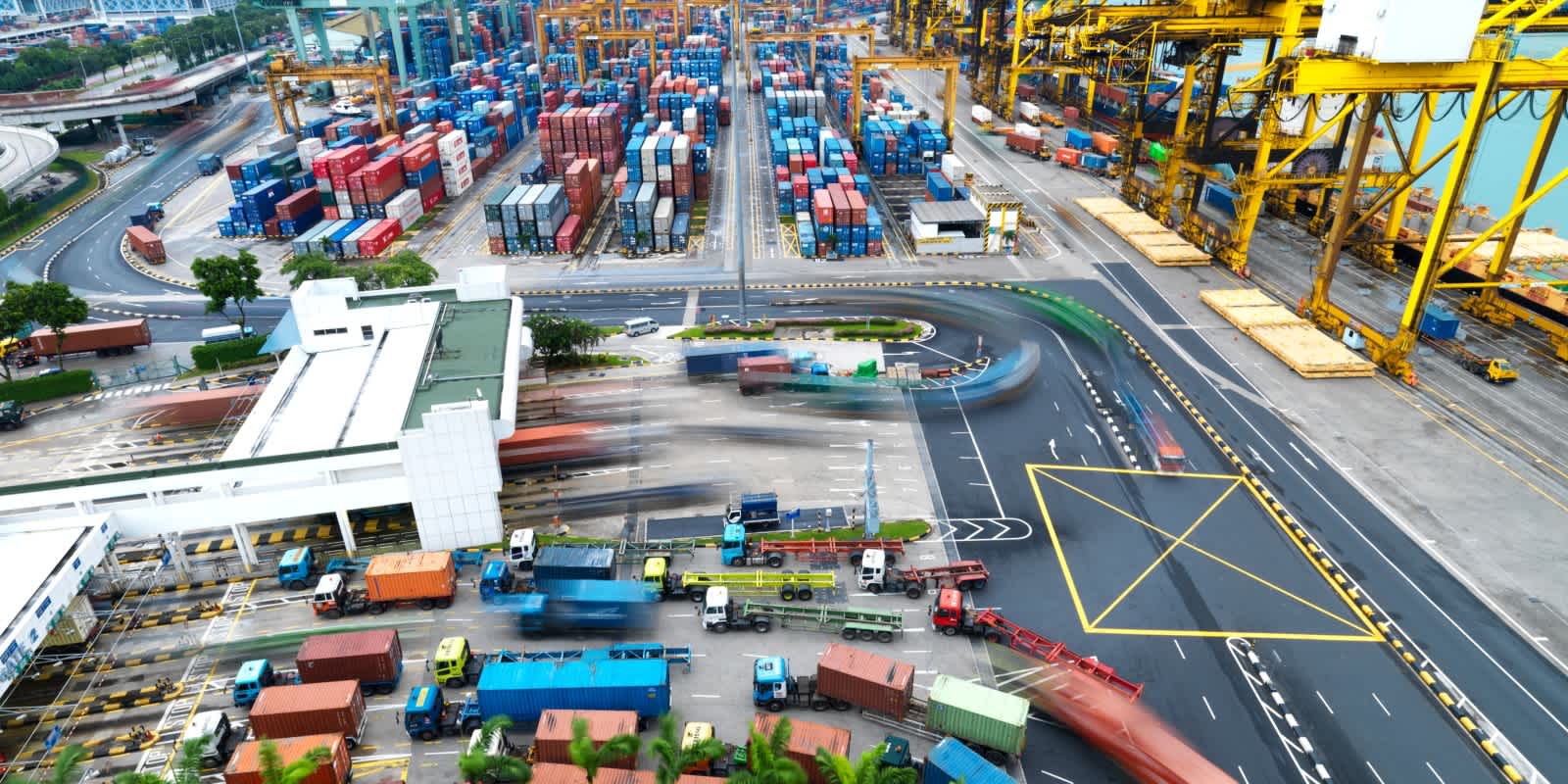
October 7, 2022
Supply Chain Snapshots - News & Trends You Should Read This Week
Friday, October 7, 2022
Looking for a quick summary of the top supply chain and logistics news and trends making waves this week? Read our weekly "Supply Chain Snapshots" for helpful summaries and commentary to get you up-to-speed on the news you need to know.
#1 BNSF Plans New $1.5 Billion Rail Facility to Relieve California Port Congestion
Read the full article from Dallas News here
- BNSF Railway is rolling out a $1.5 billion plan for a new rail facility in Southern California meant to relieve congestion around the critical ports of Los Angeles and Long Beach.
- The Barstow International Gateway, about 130 miles from the two ports, will be a 4,500-acre rail yard, intermodal facility, and warehouse for moving freight from international to domestic containers.
- The project will reduce truck traffic on Southern California freeways and speed the movement of goods to consumers and businesses.
- No timeline was given for when the new facility will become operational.
#2 Ocean Freight Orders are Signaling a Big Drop in Consumer Demand
Read the full article from CNBC here
- A significant consumer pullback is showing up in ocean shipping, with logistics managers indicating a 20% drop in ocean freight orders for September and October.
- The decline in demand cuts across many products including, machinery, housing, industrial, and some apparel—where executives say inventory issues are becoming more prevalent.
- Ocean carriers are doing “tactical canceled sailings”, to match vessel space with orders and halt declining prices.
- HSL Logistics said it’s vessel cuts were around 50% and expect the pullback may continue into 2023.
- Freight prices on one key route from Asia to the West Coast are now down more than 80% from last year.
#3 Cathay Pacific Lowers Cargo Expectations for Holiday Shipping Season
Read the full article from FreightWaves here
- Hong Kong-base airline, Cathay Pacific, reportedly plans to order up to six next-generation freighters from Boeing and Airbus to replenish its fleet.
- Air cargo accounted for nearly 80% of the Cathay Group’s total revenues in 2021.
- Experts are planning for a softer peak season this year but "are hopeful that the local restrictions on the Chinese mainland will start to lift, resulting in an increase in industrial output to meet traditional year-end demand, and therefore a shorter but solid peak season."
- Freighter operations are back at full levels and will soon be complemented by more passenger capacity.
- Cathay Pacific said it intends to add more than 200 passenger flights in October for regional and long-haul routes, increasing flights to Tokyo, Sapporo, and Osaka.
#4 Another Supply Chain Crisis: Barge Traffic Halted on Mississippi River by Lowest Water Levels in a Decade
Read the full article from CNN here
- The lowest water levels in a decade, caused by a severe Midwest drought, has closed the Mississippi River at a crucial time of the year for the transport of crops from the nation's heartland.
- The Army Corps of Engineers has been dredging portions of the river in an attempt to deepen channels and get barge traffic moving again, but the closures have caused a massive tie-up in the nation’s already struggling supply chains.
- The combination of fewer barges per trip, and less cargo per barge, has cut the capacity of barges moving on the river by about 50%, and that has sent rates soaring.
- Dry weather has led to "intensifying drought conditions across much of the Great Plains, Mississippi Valley, and Midwest," according to the latest update from the US Drought Monitor.
#5 Small Businesses Getting Squeezed Out in Push for Warehouse Space
Read the full article from The Wall Street Journal here
- Large retailers and manufacturers are gobbling up scarce storage capacity as excess inventories fill up industrial real estate.
- A warehouse crush across the U.S. is squeezing out smaller companies as big retailers fill industrial storage sites with their growing stockpiles of inventory.
- Warehouses are filling up due to goods arriving late from supply chain congestion and stockpiles of merchandise piling up from pandemic-era consumer buying habits.
- Logistics and real-estate specialists say many large retailers are demanding extra room to store excess inventories, driving up costs for smaller companies and in some cases, driving them out of spaces.
#6 How Sustainable Supply Chains are Driving Business Transformation
Read the full article from EY here
- Supply chains are sustainability's new frontier where businesses can reach beyond cost savings to increased revenue, customer loyalty, and share price.
- To reap the benefits now and in the long term, companies should align to science-based targets and begin work to define and achieve those goals.
- 8 in 10 supply chain executives are increasing their efforts toward sustainable supply chain operations—working towards efficient use of natural resources, decarbonization, ethical sourcing, and fair trade.
- EY’s 2022 survey reveals that supply chain visibility is top-of-mind for executives, but remains a work in progress with only 37% seeing increased visibility.
5 actions for gaining supply chain visibility
*(Flexport provides customers a strategic operating model that powers transparent, agile, efficient, and profitable global supply chains all in one place.)
- Determine how sustainable supply chains fit into your organizational-wide commitments and goals.
- Improve the visibility and traceability of your supply chain via technology and data insights.
- Expand your ROI measurement to include intangible impacts and sustainability outcomes.
- Move beyond a sourcing and procurement focus to capture benefits across the end-to-end supply chain.
- Leverage available tax incentives and grants.
#7 Costco Not Ready to Cut Prices as Shipping, Commodities Costs Fall
Read the full article from The Wall Street Journal here
- Rising labor costs and prices that were locked in with suppliers months ago are keeping inflationary pressures on the retailer.
- Shipping and commodities prices have seen steady declines recently, but Costco’s Chief Financial Officer Richard Galanti says they aren’t yet in a position to pass savings on to customers.
- Pricing at Costco’s 839 global warehouse stores hasn’t decreased, despite the lower prices for shipping goods and for things like gasoline and steel.
- It can take anywhere from six months to a year before lower shipping costs translate into falling prices for consumers, said Chuck Grom, a managing director at Gordon Haskett Research Advisors. Higher costs in other business areas can delay price drops even longer.
*We'll be back next week with another edition of Supply Chain Snapshots.
*
Related Content
![Are You Prepared for the Unexpected? Logistics Experts Share Advice for Peak Season Success]()
BLOG
Are You Prepared for the Unexpected? Logistics Experts Share Advice for Peak Season Success






